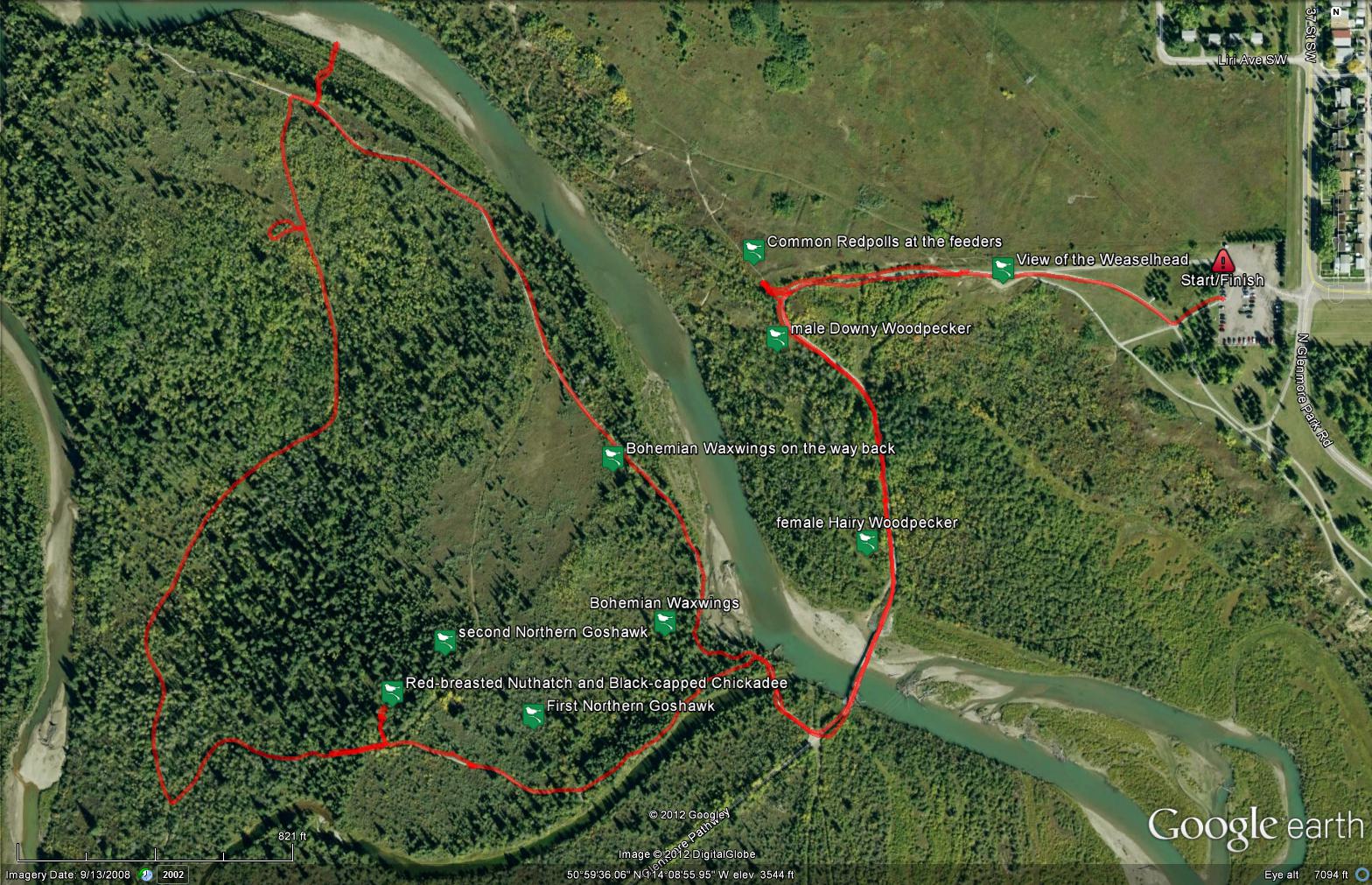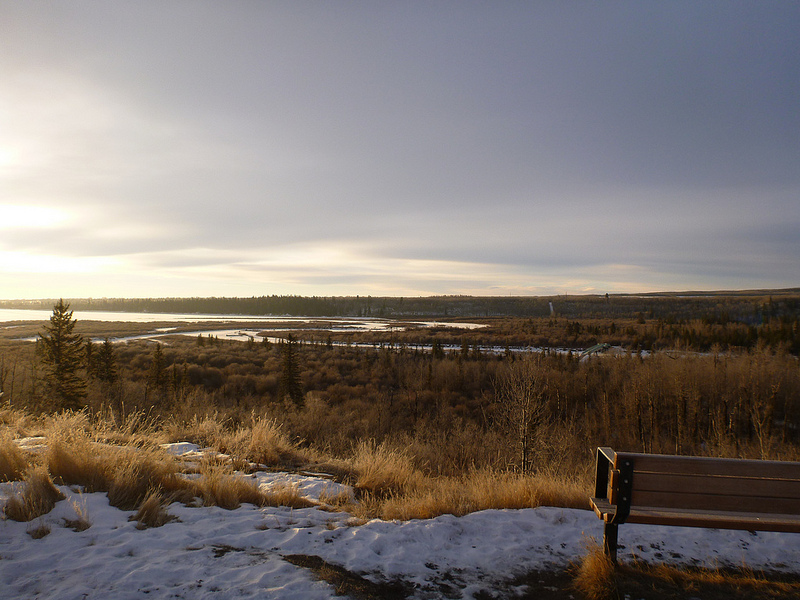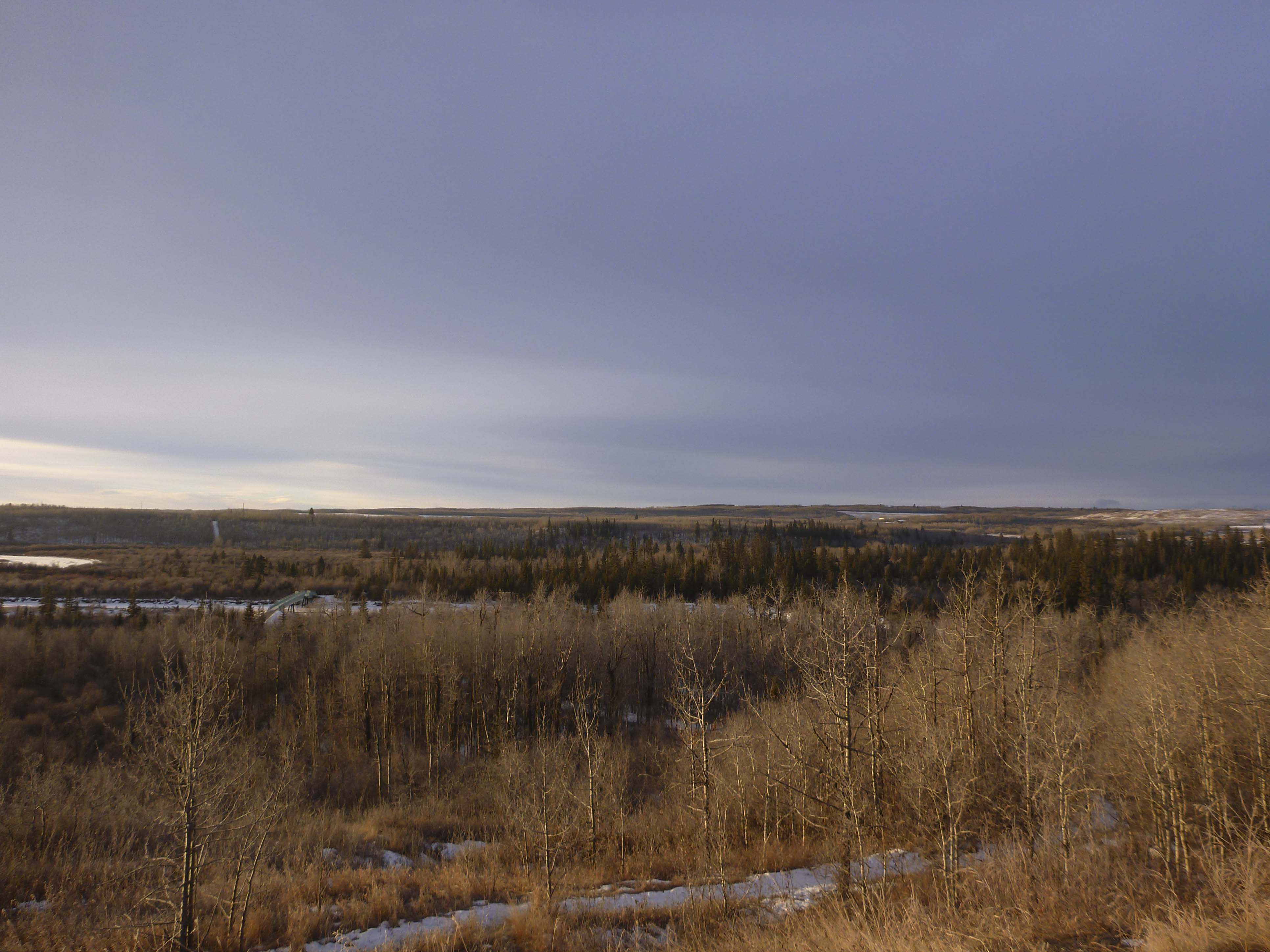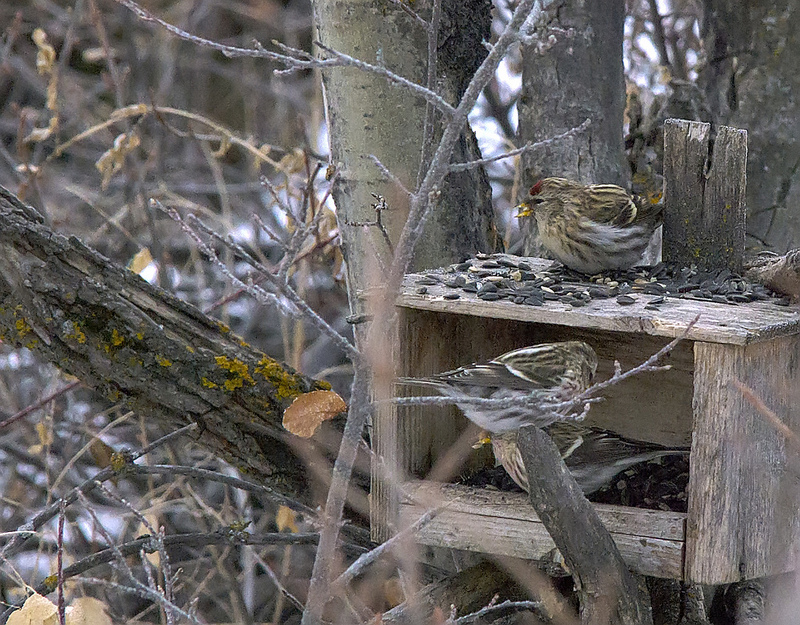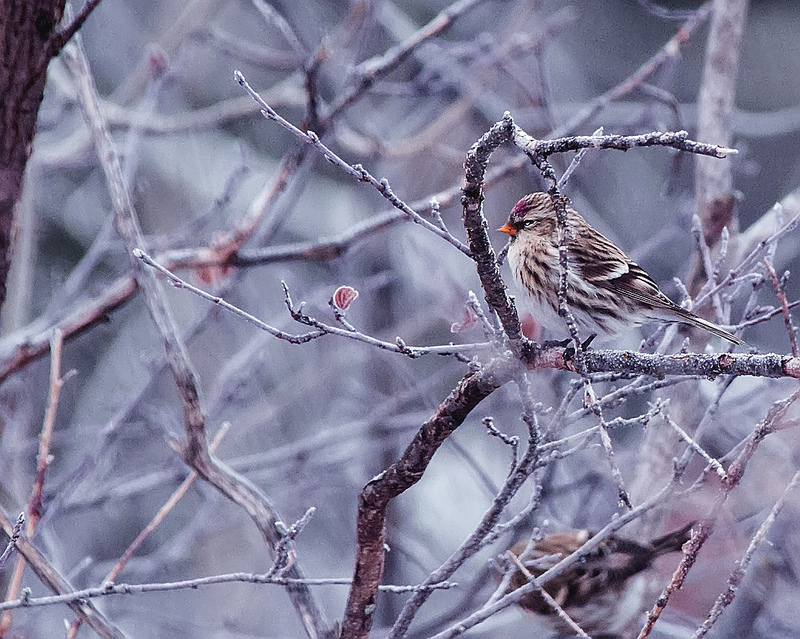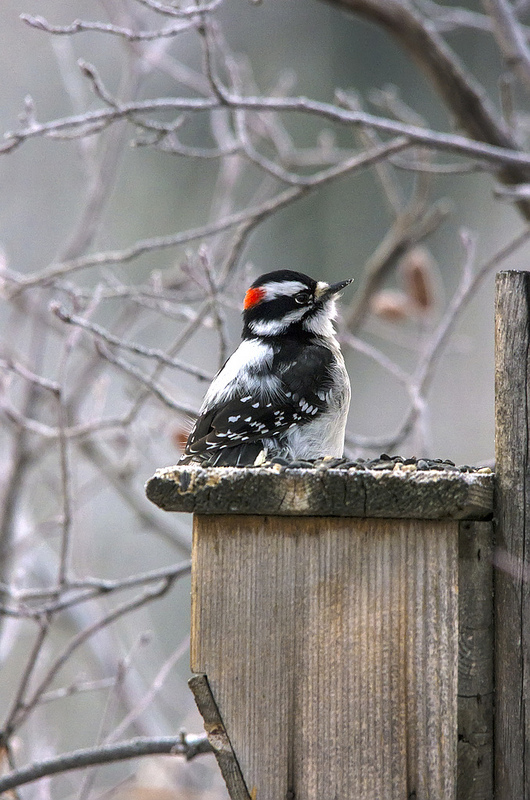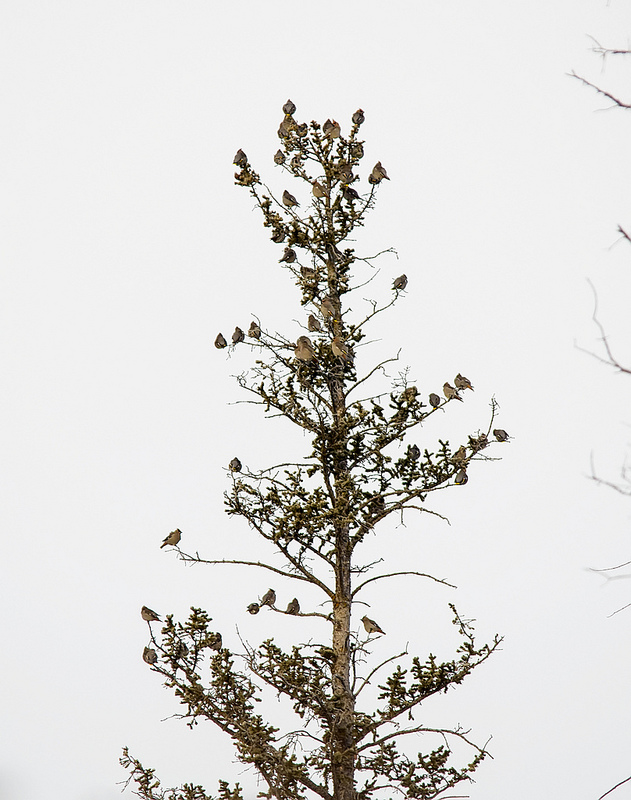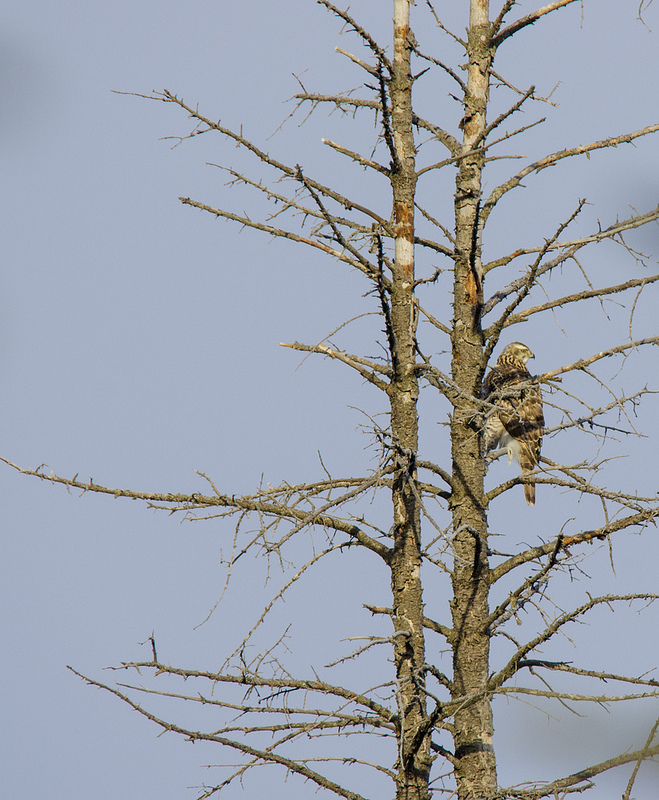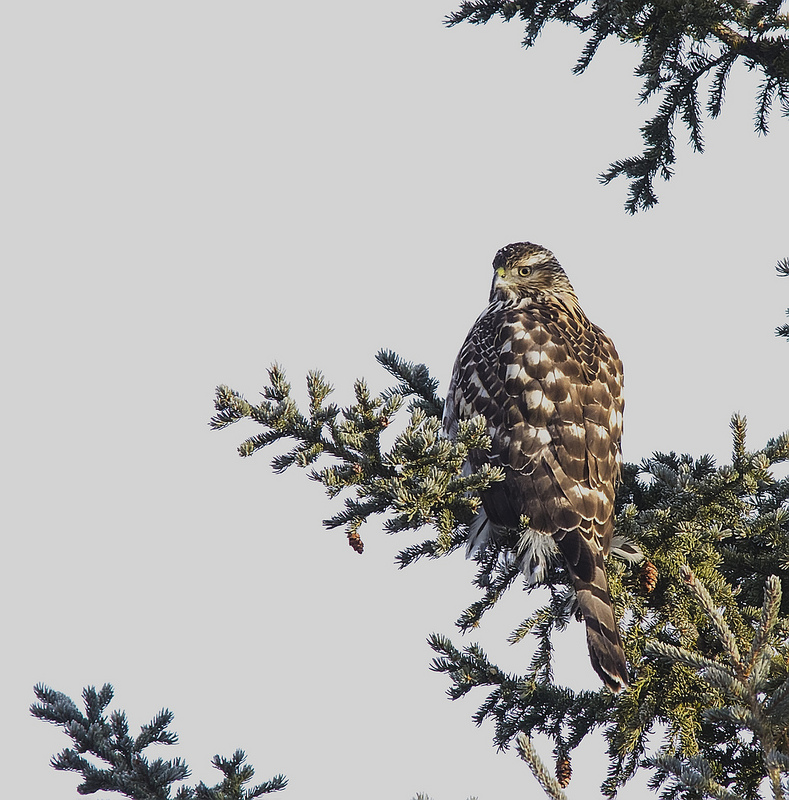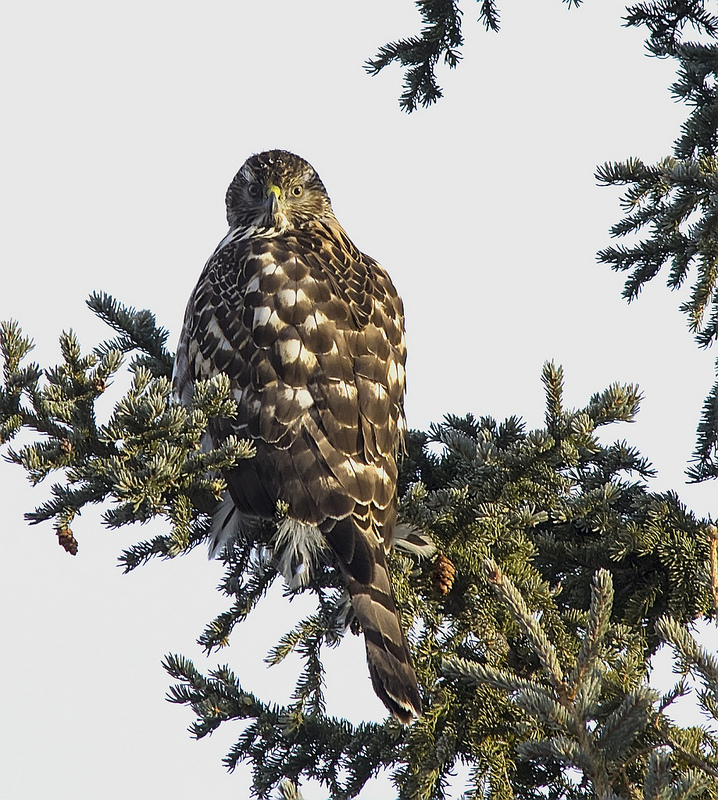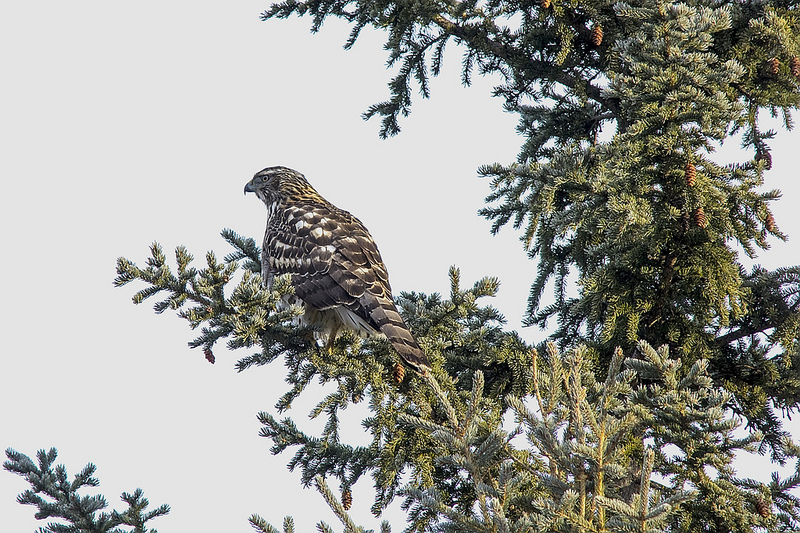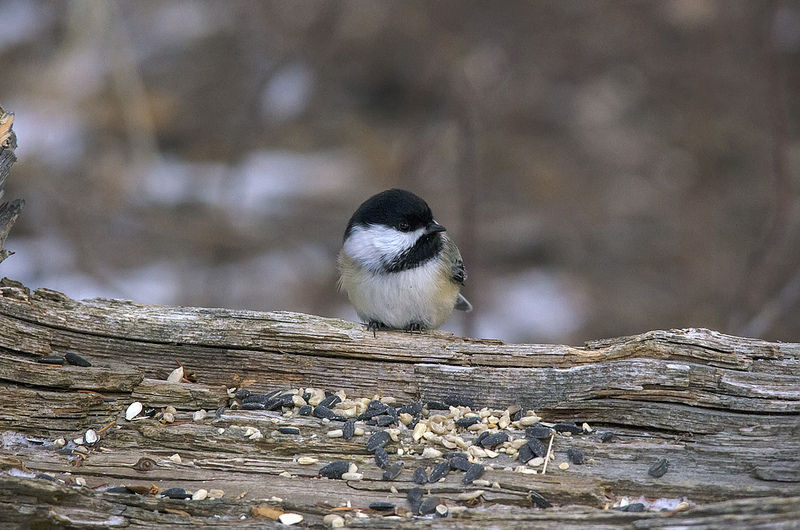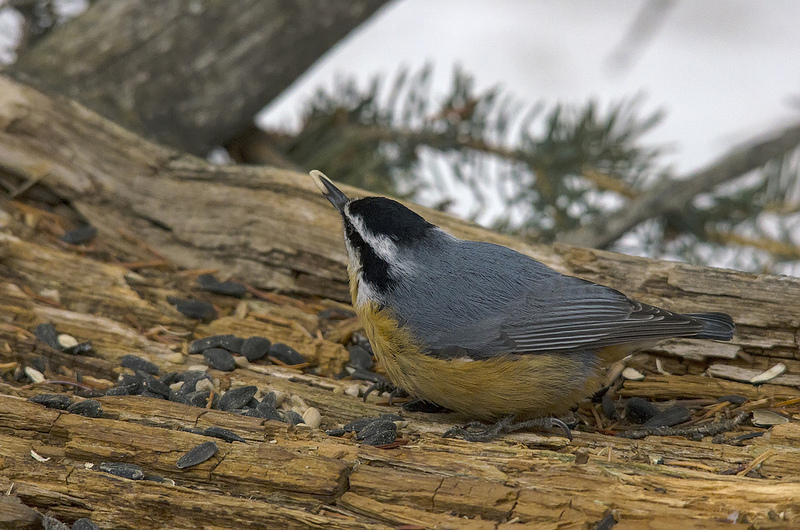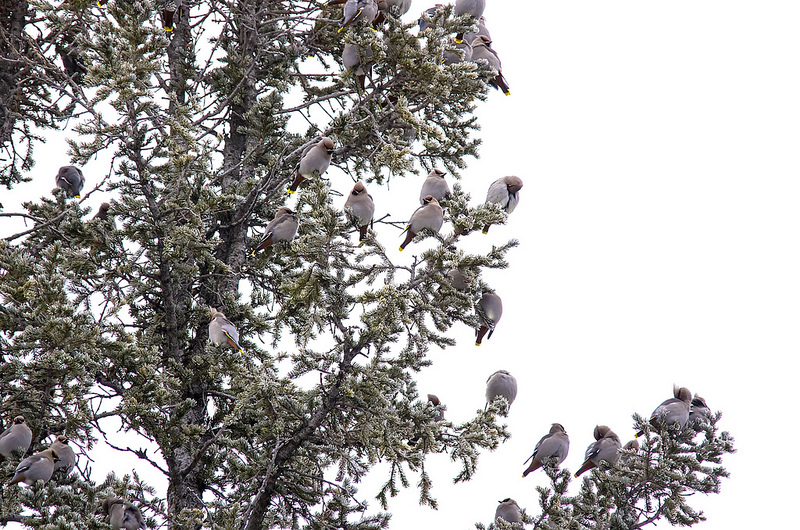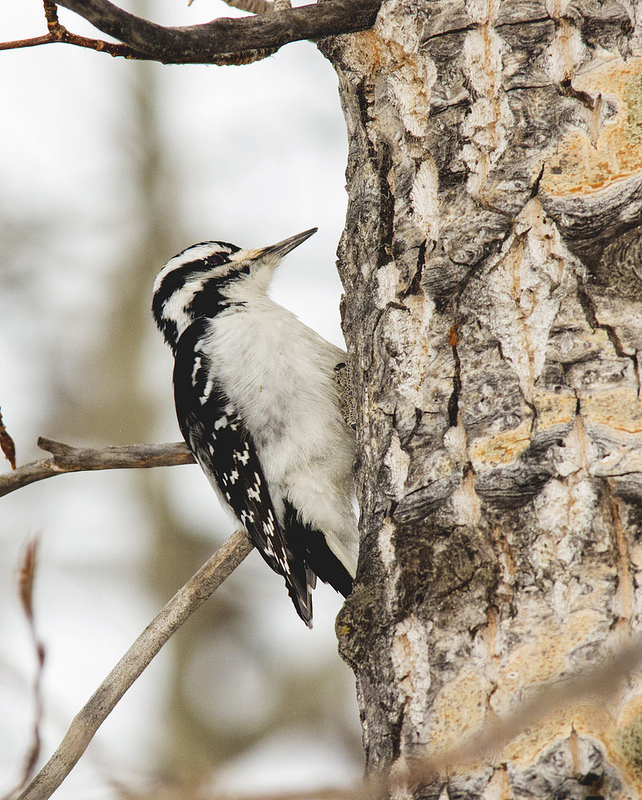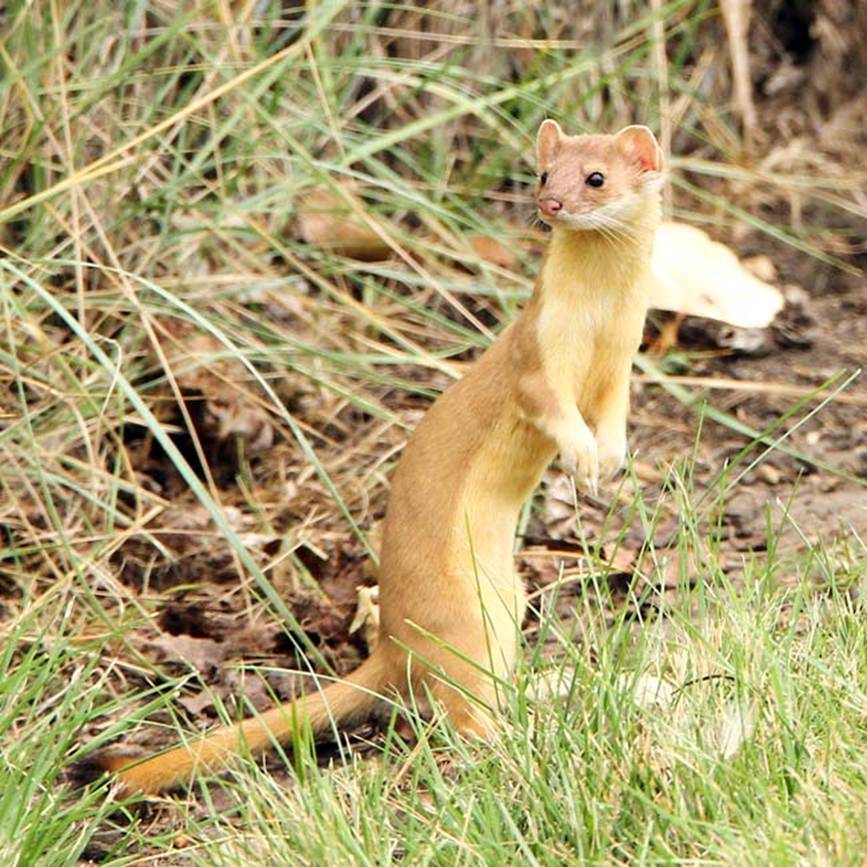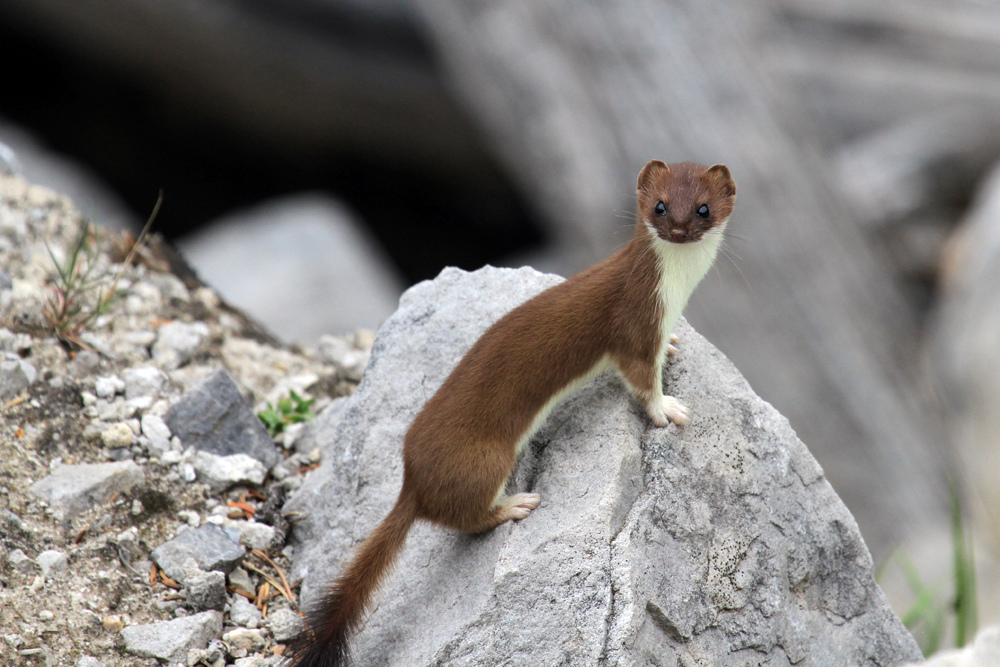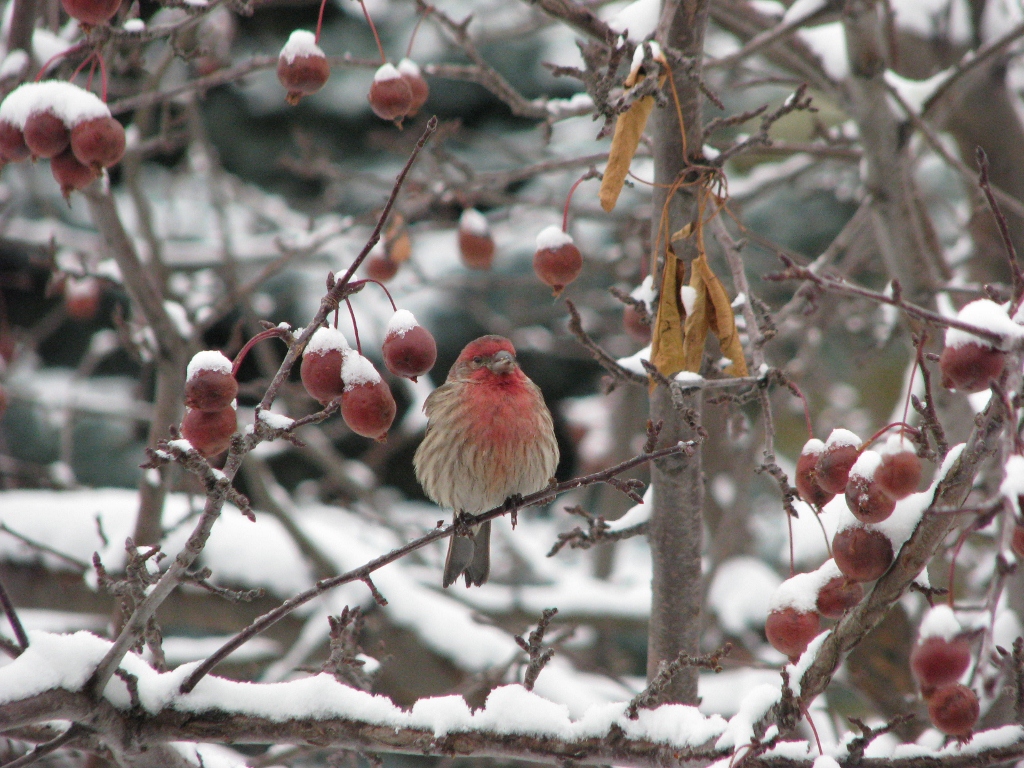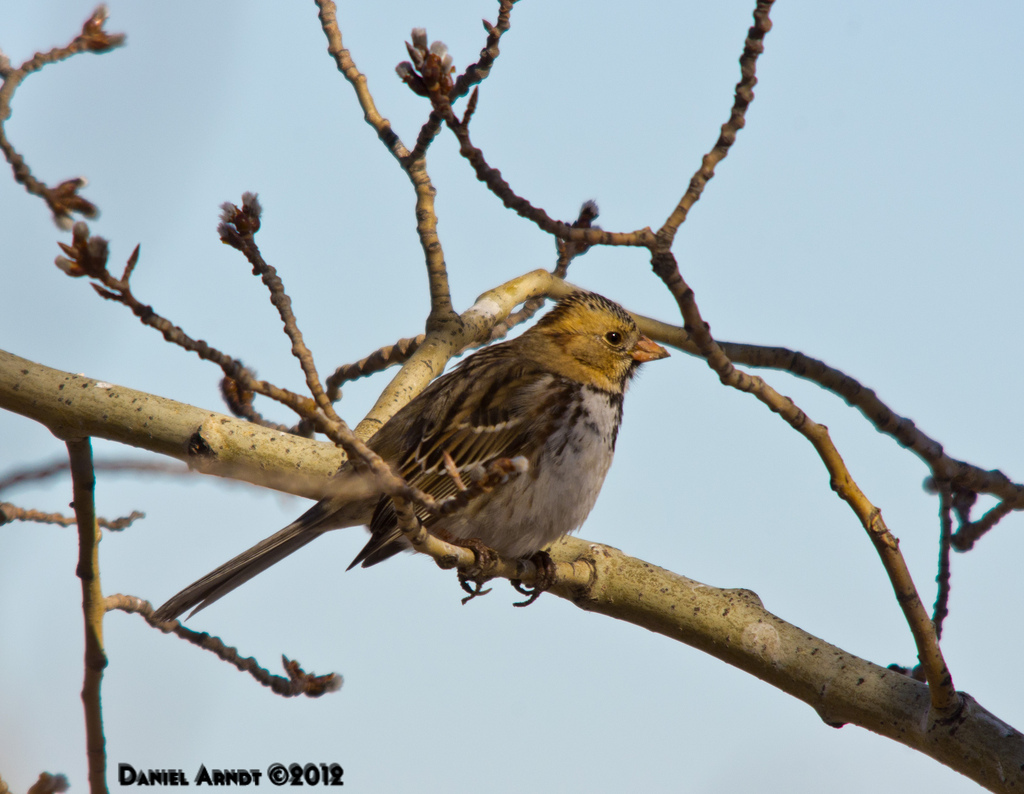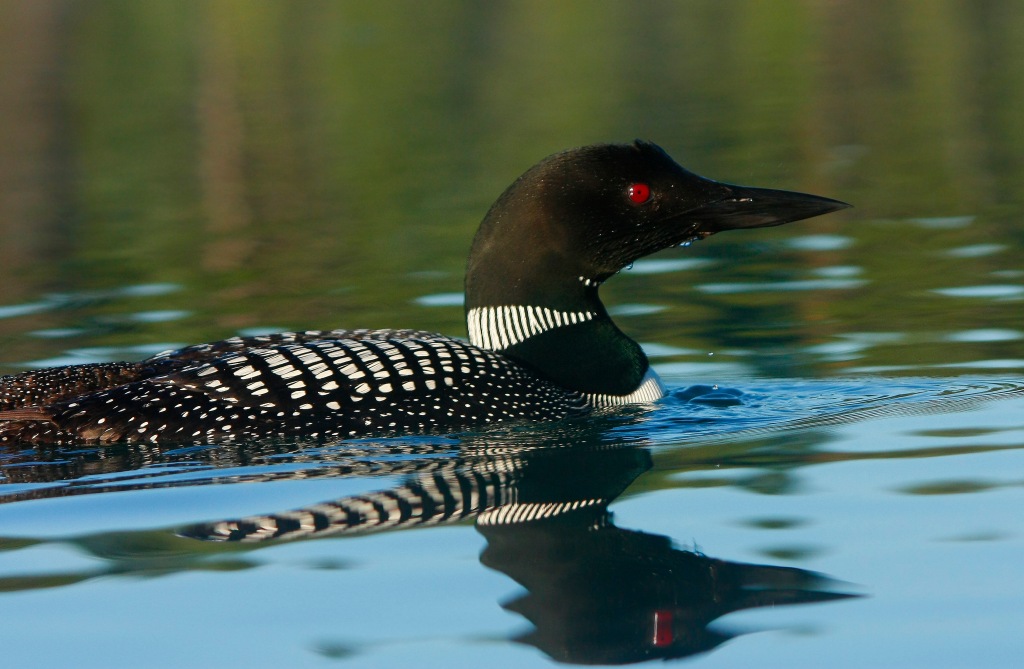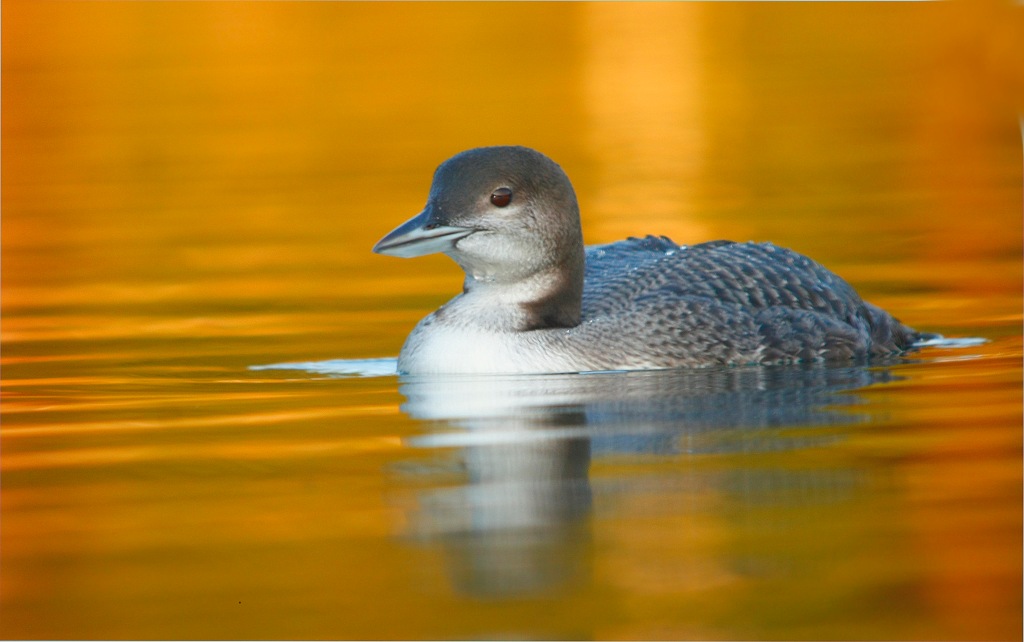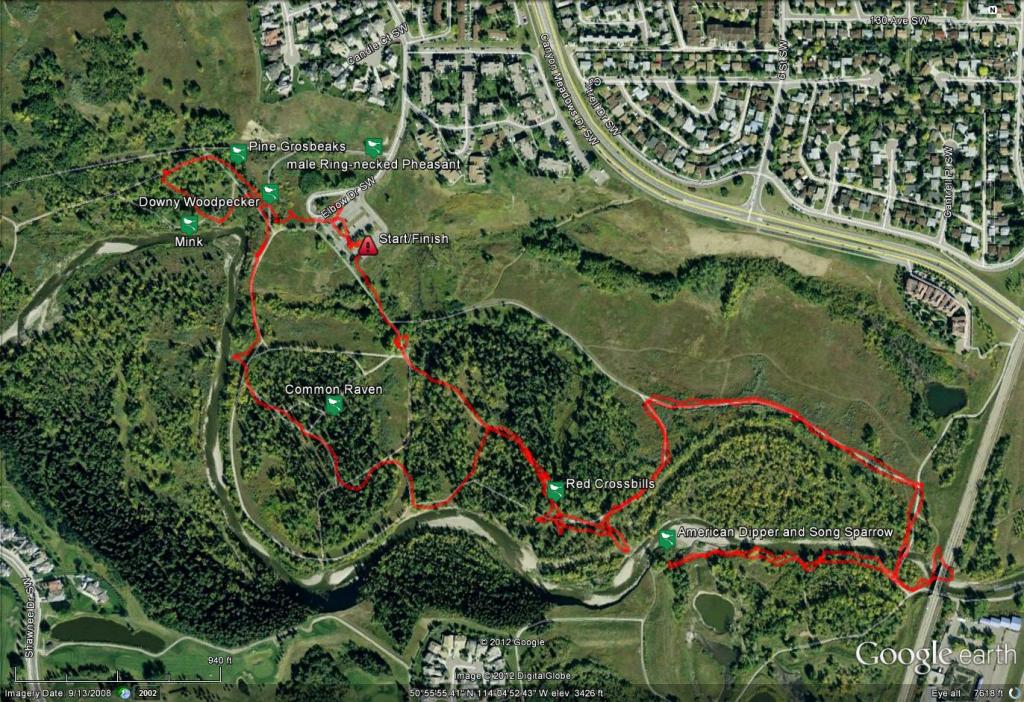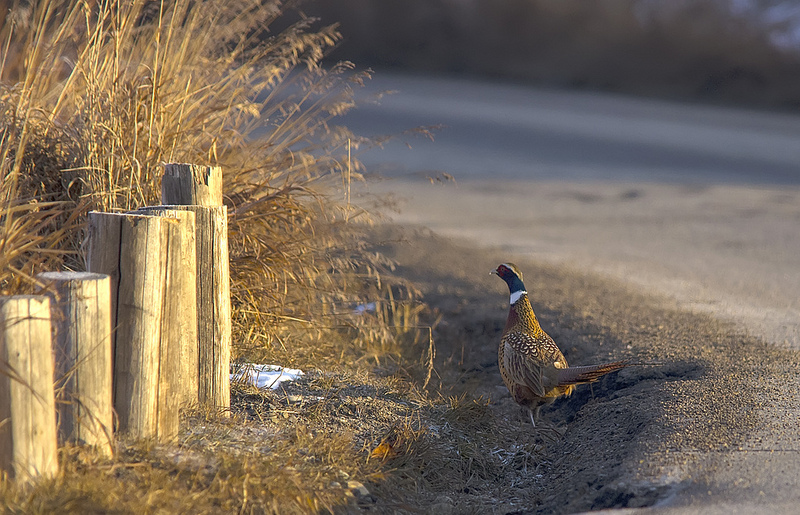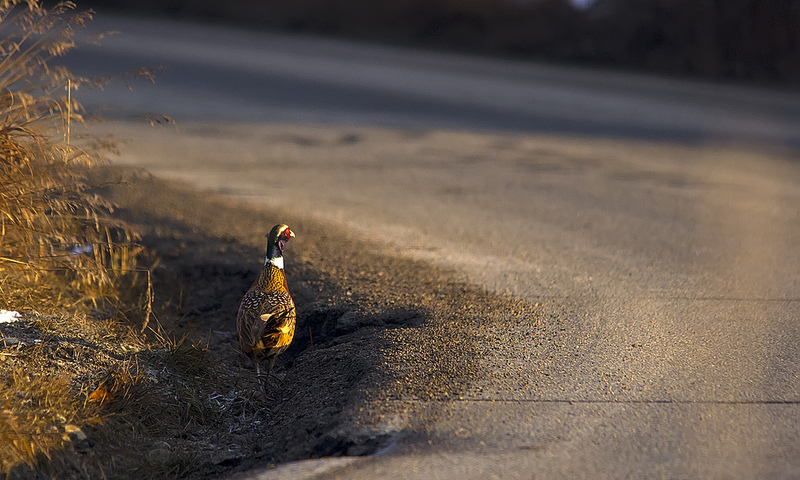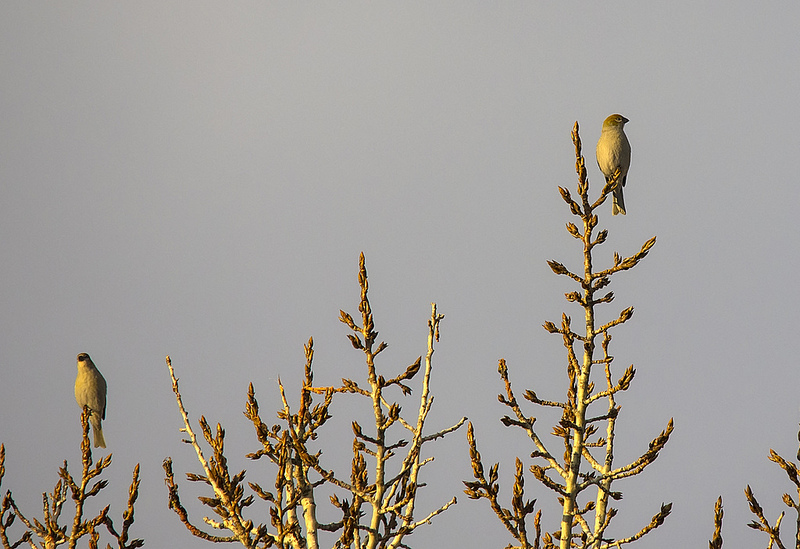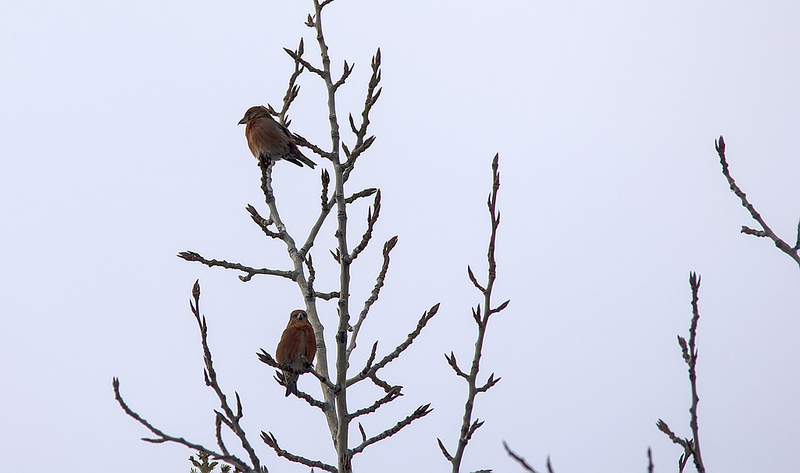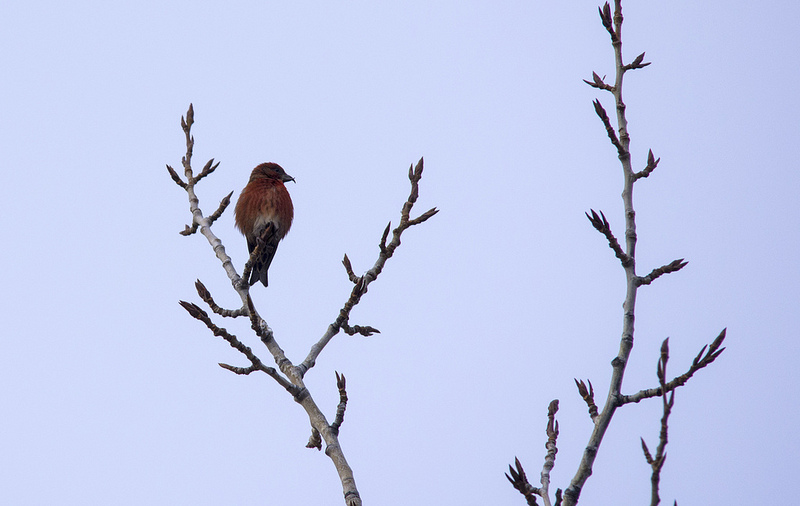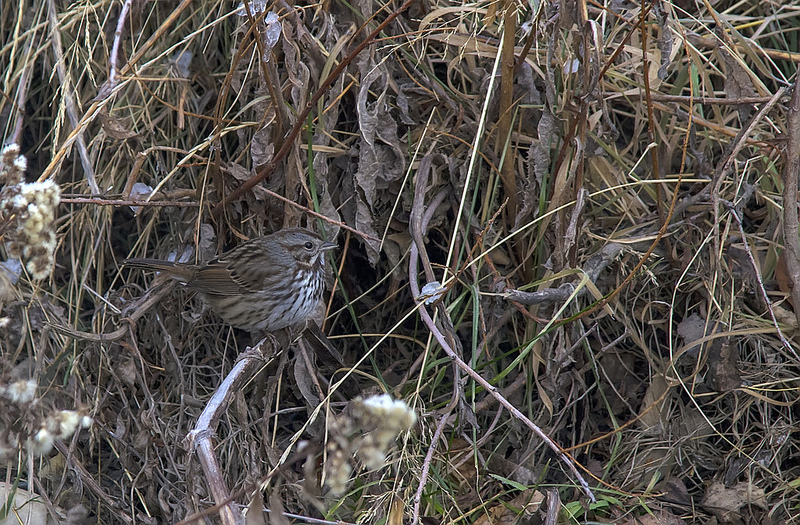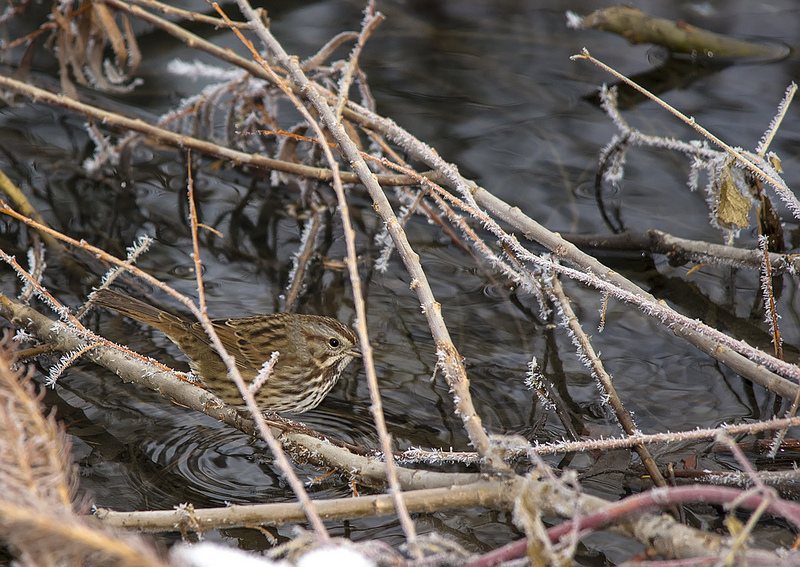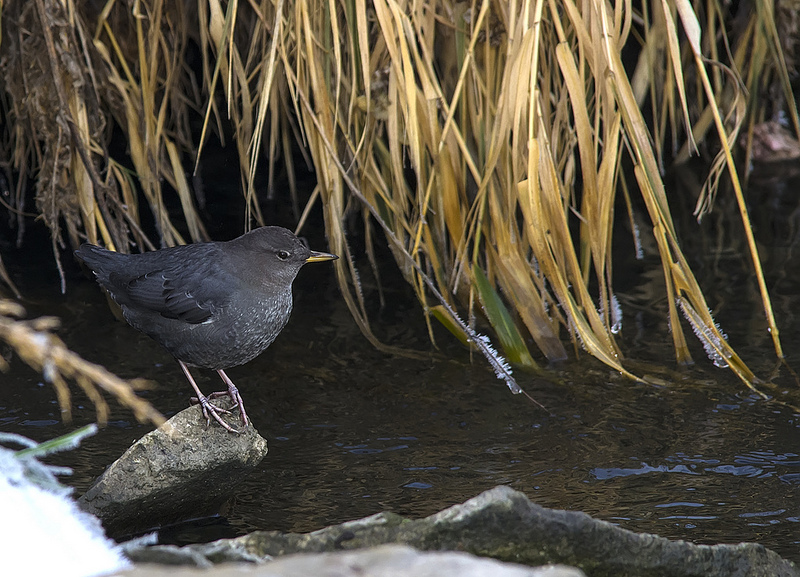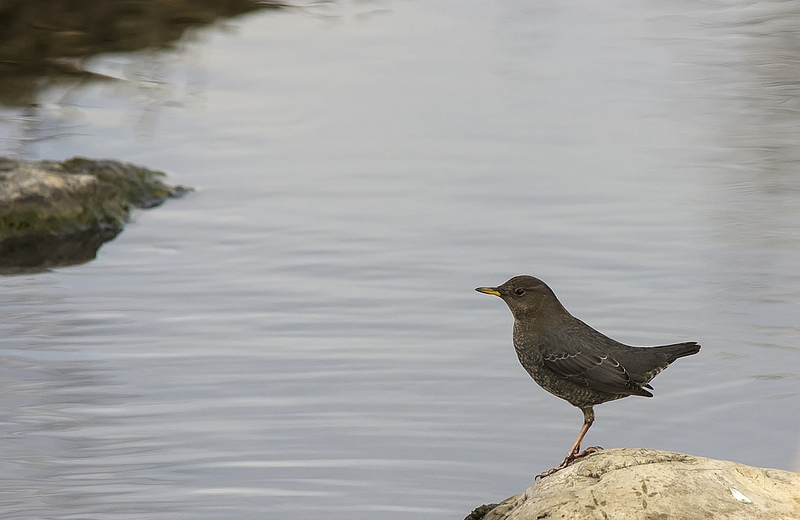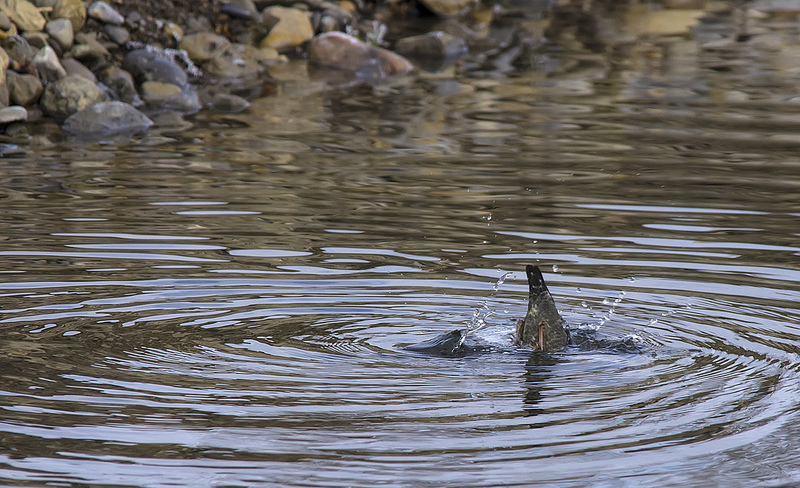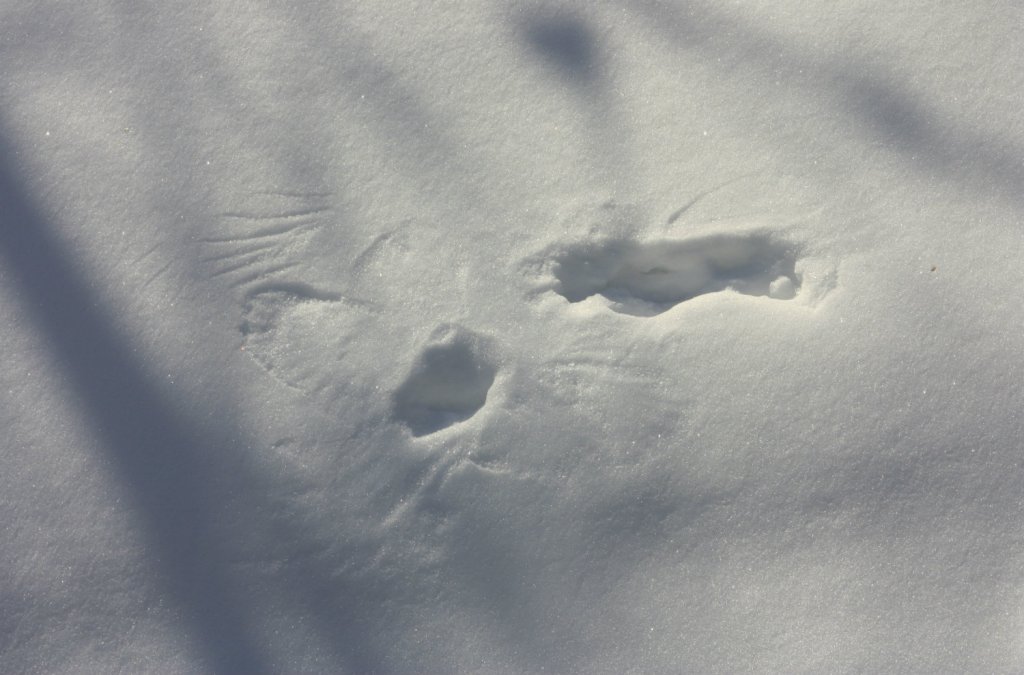Posted by Dan Arndt
The Weaselhead Natural Area is located west of the Glenmore Reservoir, in the Elbow River Valley between North and South Glenmore Parks. It seems like only yesterday we started out this Autumn Birding Course at times, but at others, it seems like it’s been almost a lifetime since we were exploring the late summer environs of Inglewood Bird Sanctuary and Mallard Point. With Christmas Bird Counts quickly approaching and the lure of longer days ahead as we move into January, it’s the days like today that are a harsh reminder of the realities of winter.
As we headed out from the parking lot into the cold, wintry morning, the sky was partially clear, but the beauty of the sunrise was deceptive. At -19 degrees Celsius, with the added wind, it felt like it was -27 degrees Celsius, reminding all of us of the reality of the season, and that we had been incredibly lucky so far!
From the top of the hill we stopped to look for coyotes, white-tailed or mule deer, as well as a Pileated Woodpecker that had been seen at the top of the hill earlier this week, but sadly came up short. At least it was a great view!
Unlike last year, the Pine Grosbeaks have been a little bit less active so far this winter, and the Common and Hoary Redpolls haven’t shown up in as large numbers as we saw last year either, but at least we saw a few of them at the feeders mid-way down the hill. No Pine Grosbeaks or Hoary Redpolls in this batch today though!
Just a little further down the hill, this male Downy Woodpecker seemed completely fearless of our group, flying off only when a group of joggers ran by. The red on his head was so vibrant and bright, it looked orange in the early morning light.
As we headed down the hill and past the nearly empty feeders at the bottom of the hill, the distinctive upward trilling flight call of Bohemian Waxwings. While this flock was impressive in size, it was nowhere near the size of others we’ve seen here in the past!
Crossing the meadow that is home to nesting Calliope Hummingbirds in the summer, we stopped to take a look at a Northern Goshawk off to the north of us. While I stopped to snap a photo of it, a group of birders behind us in the lead drew my attention to the “first” Northern Goshawk that all three of us “experienced” birders walked right by!
Turning back to take a look at the first one our group actually spotted, it took quite an interest in us, and in the sounds of my camera clicking away.
We took a brief detour into a small grove of spruce trees where we found Black-capped and Boreal Chickadees, White and Red-breasted Nuthatches, and even a Golden-crowned Kinglet and Brown Creeper stopped by just as we were preparing to leave. Unfortunately, the Boreal Chickadee, Golden-crowned Kinglet and Brown Creeper were a bit too elusive for me, staying high up in the dark overhanging spruce trees.
After coming out from the grove, we headed straight west, then north along the far western pathway. The trails were incredibly quiet, with only a pair of Common Ravens and a handful of Black-billed Magpies flying overhead, and the usual swarms of Black-capped Chickadees following us for an easy handout. It wasn’t until we came nearer to the river again where we found that flock of Bohemian Waxwings again, but this time from a better angle.
We did end up finally adding two more species to the list as we headed back to the vehicles, but only one that I got a photo of. It was surprisingly similar to the last bird we added to our list last week, both in composition and in timing, this Hairy Woodpecker popped up near the feeders on the way back up the hill!
While this was the last course for our Autumn Birders, I suspect many of them have already signed on again for the Winter birding courses, and I’ll make sure to post some updates in the following weeks about the Christmas Bird Counts I’m taking part in this Holiday Season, and of course I’ll post some photos of the birds I manage to add to my life list while I’m down in Mexico while the rest of you freeze up here in the frigid north… err, I mean, while you’re all enjoying time with your families and friends back here in Canada.
